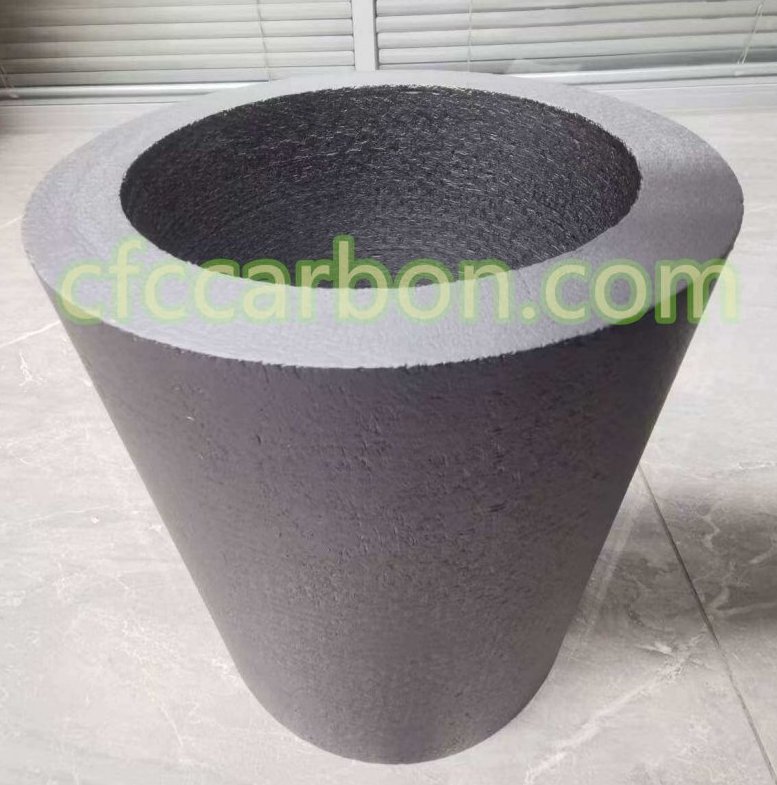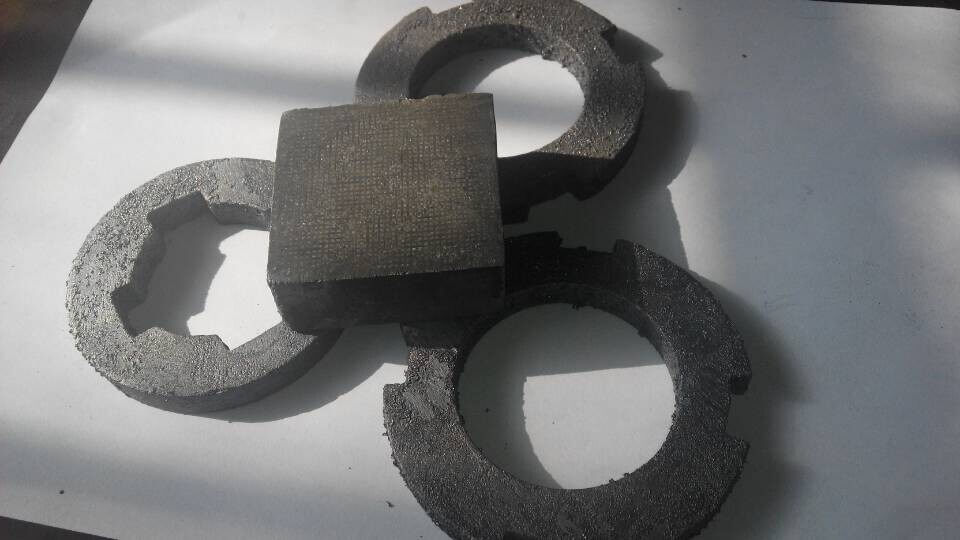MeKee studied the effect of borate coatings on carbon-carbon composites. The samples used in the study consisted of polyacrylonitrile (Pan) fibers in a pyrolyzed pitch matrix. McKee also tested fibers without a matrix. A nonisothermal, linear temperature rise, oxidation test was run

SiC coating carbon fiber composite material-CC-CFC (2)
on treated and untreated fibers in air. The untreated fibers lost weight significantly at 450C. Treated fibers lost no weight until a temperature of 1000C was obtained. Untreated CC composite lost weight at 500C while the treated CC composite lost weight at 1000C. Isothermal oxidation tests in air at 1000C showed that impregnation of pores with borates in conjunction with borate coatings was the most effective way of protecting CC composite from oxidation. The small weight losses observed in the test were attributed to the loss of boron oxide as a vapor species. Additions of water vapor to the air increased the weight loss as a result of higher vapor pressures of hydrated boron oxides but still resulted in reduced oxidation rates. The eventual vaporization of the boron oxide coating in air and in air-water atmospheres led to the rapid gasification of the CC composite. It was concluded that coating CC composite with B2O3 could prevent oxidation at temperatures up to 1000C. McKee pointed out that the ends of carbon fibers were poor in resistance to oxidation. Apparently the fibers oxidized at ends and along with axes and undercut the boron oxide coating.
Mckee impregnated graphite powder with B-based solutions and heated them to convert the solutions to boron oxide. An addition of 2 weight percent boron oxide reduced oxidation by a factor of five at 800C. Activation energies increased with B2O3 additions from 46 to 51 Kcal/mol. Organoboron compounds that wetted the graphite were the most effective inhibition solutions. These compounds resulted in finer dispersions of boron oxide in the graphite. Boron oxide was present in concentrations large enough to cover the entire surface, but did not, as evidenced by the constancy of activation energies. Instead, B2O3 segregated to active oxidation sites. The

C-SIC-002
preference of boron oxide to poison active sites was associated with the bonding of glassy groups to terminal carbon atoms. Oxidation in environments containing water vapor was not found to affect the inhibiting effects of boron. This observation may be the result of a large amount of B2O3 on the specimen surface.
Ehrburger et. Al. studied the inhibition of CC composite oxidation with boron oxide. The composite was made of exacrylic fibers, pyrocarbon matrix, and open porosity. The inhibitor was added by converting orthoboric acid to boron oxide by heating in N2 at 973K. electron microscopy revealed that a 1 hr. treatment resulted in the boron oxide forming at globules. Globular boron oxide exhibited unpredictable oxidation results. An alternative treatment for 61 hours resulted in the boron oxide uniformly covering surfaces with more reproducible oxidation results. Oxidation results were characterized in terms of an inhibition factor. The inhibition factor was the ratio of the oxidation rate of an untreated sample to the rate of an inhibited sample. The inhibition factor was found to increase with boron oxide content. The rate of increase, however, decreased after a 2 w/o (weight percent) boron oxide addition. The reductions in oxidation rate were explained in terms of the amount of boron oxide added to the composite. Additions up to 2 w/o were proposed to block active reaction sites. Amounts greater than 2 w/o boron oxide resulted in a diffusion barrier that separated the reactants. The CO/CO2 ratio for oxidation at 707C was lower for inhibited samples and varied with the amount of burn off. In addition this ratio was lower for increased additions of B2O3. At a 10 w/o boron oxide addition the reacted gas was essentially CO2.
Allouch and Hients experimented with a B-P-SiP2 inhibitor which caused oxidation rates to decrease for samples tested at 500-800C. This inhibition effect was more effective on fine grained graphites than coarse grained graphites. The reason for this difference was thought to be a reduction in more active surface area for the fine grained graphite which caused the preexponential term in the Arrhenius expression used to describe carbon oxidation to be decreased.
CC composite have been fabricated with a chemical vapor infiltrated Bn filler inhibition system which provided oxidation resistance up to 1000C if the porosity was maintained at low levels. Greater oxidation resistance was found for increased BN content. Christin et. At. Used SiC to obtain oxidation resistance. SiC was found to work only when the composite was fully densified. Rossignol et. At used TiC to inhibit carbon. TiC was less effective than SiC or BN.
The data available on the inhibition of carbon-carbon shows that there are two ways that the oxidation of carbon can be inhibited. One involves procedures where the rates of the chemical reaction at the surface of carbon are decreased. The other approach involves the development of a barrier layer which separates the carbon from the gaseous reacants.
related news /articles:
Mechanisms of protection of C-C composites against catalytic oxidation (2)
Mechanisms of protection of C-C composites against catalytic oxidation
Inhibition oxidation of carbon-carbon composites (1)
Coating systems for carbon carbon composite material (2)